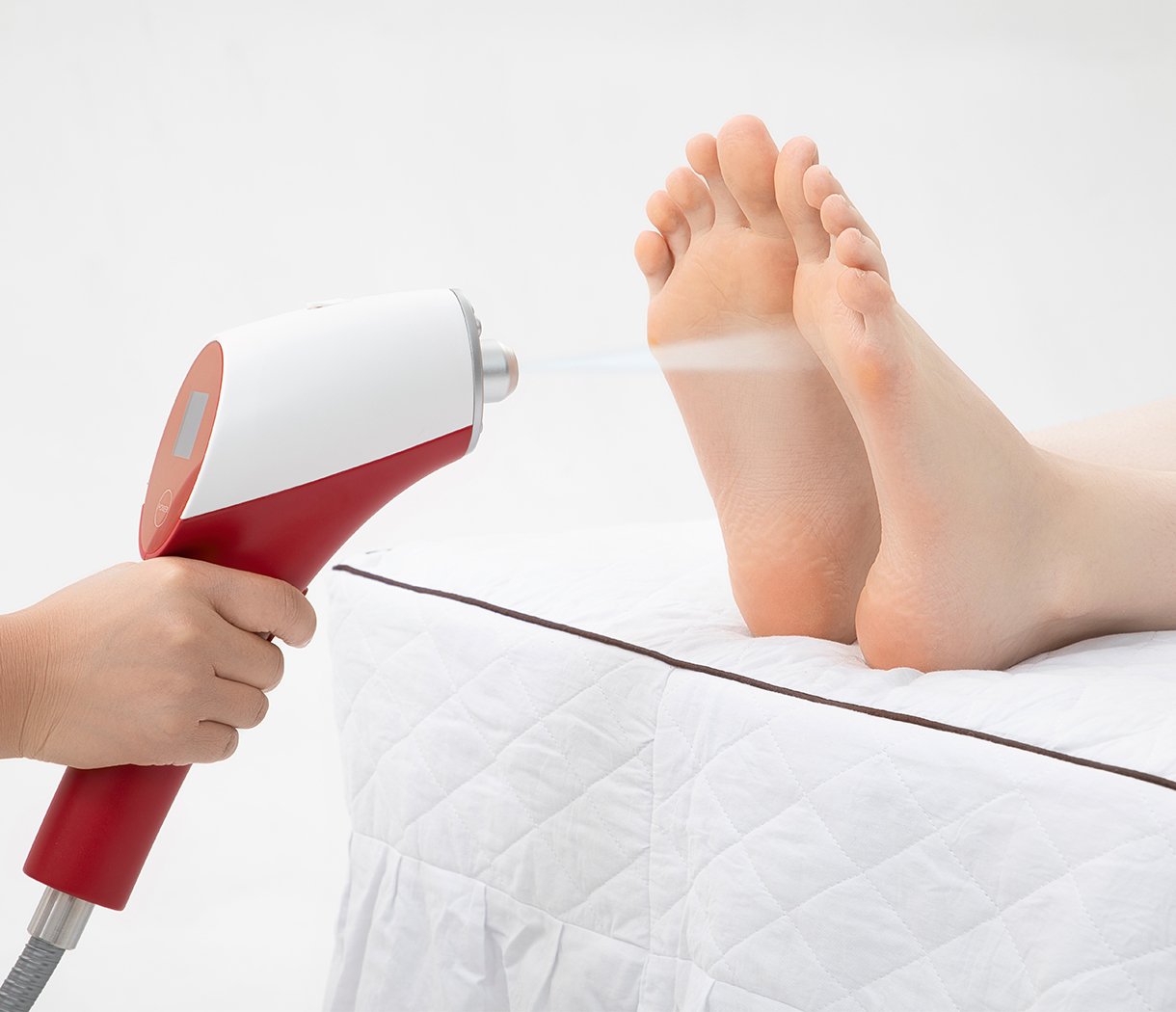What is Localized Cryotherapy?
Localized cryotherapy is a non-invasive treatment that uses cold temperatures to target specific areas of the body. It helps promote faster healing, pain relief, and reduced inflammation. Unlike whole-body cryotherapy, which affects the entire body, localized cryotherapy focuses on one region, such as joints, muscles, or soft tissues. This provides concentrated benefits with little recovery time. It’s especially popular with athletes, fitness enthusiasts, and people seeking a natural alternative to medications or invasive treatments.
How Localized Cryotherapy Works
The technology behind localized cryotherapy involves applying a stream of cold air or CO2 (carbon dioxide) to the treatment area. This cold therapy constricts blood vessels, numbs nerve endings, and decreases metabolic activity in the treated tissue. As a result, inflammation is reduced, pain is alleviated, and recovery time is shortened. The cooling process also triggers the body’s natural healing mechanisms, promoting the release of endorphins and increasing circulation to the affected area once the treatment is complete.
Localized cryotherapy is commonly applied through handheld devices or specialized machines that deliver precise cooling, making it ideal for targeting pain and soreness in smaller areas, like the knee, shoulder, or back.
Top Benefits of CO2 Cryotherapy
CO2 cryotherapy stands out as a cutting-edge method due to its ability to provide fast, effective pain relief and recovery. Here’s why it’s gaining popularity:
Pain and inflammation relief: By numbing the affected area, CO2 cryotherapy reduces pain and minimizes inflammation, which is especially beneficial for those dealing with injuries or chronic conditions like arthritis.
Faster recovery time: Whether you’ve just had an intense workout or a minor injury, localized cryotherapy accelerates the body’s healing process by improving blood flow and nutrient delivery to the affected area.
Muscle soreness relief: Athletes and fitness enthusiasts love CO2 cryotherapy for its ability to ease post-workout soreness. It helps speed up muscle recovery, so you can get back to your routine without delay.
Targeted treatment: CO2 cryotherapy focuses on specific areas, providing more effective relief than broader methods like ice packs or heat pads.
Improved skin health: Cryotherapy helps reduce puffiness, improve circulation, and treat skin conditions like acne and rosacea.
Who Should Try Localized Cryotherapy?
Localized cryotherapy is ideal for a wide range of individuals:
Athletes and fitness buffs: Whether you’re recovering from a tough workout or an injury, localized cryotherapy helps accelerate muscle recovery, reduce soreness, and improve flexibility.
People with chronic pain: Conditions like arthritis, tendonitis, or sciatica benefit from cryotherapy, as it targets pain directly and alleviates inflammation in the affected areas.
Those seeking non-invasive pain relief: If you’re looking for a natural, non-surgical solution to pain relief, CO2 cryotherapy offers a safe, effective alternative to medications or invasive treatments.
Whether you’re recovering from an injury, dealing with daily discomfort, or just want to speed up your recovery time, CO2 cryotherapy can provide the relief you need.
Minimal Side Effects
One of the best features of localized cryotherapy is its minimal risk of side effects. Unlike more invasive procedures, cryotherapy uses a targeted cold therapy approach that’s non-invasive and typically well-tolerated. Some people may experience temporary redness or tingling in the treated area, but these effects are short-lived. It’s important to follow proper treatment guidelines, as overuse or incorrect application can lead to skin irritation or frostbite. However, these risks are rare when the therapy is performed by a trained professional.
Conclusion
Localized cryotherapy provides targeted pain relief, faster recovery, and better overall health. It reduces inflammation, speeds up healing, and eases muscle soreness. This treatment is ideal for athletes, people with chronic pain, or anyone recovering from a tough workout. It’s a great addition to any recovery routine.



